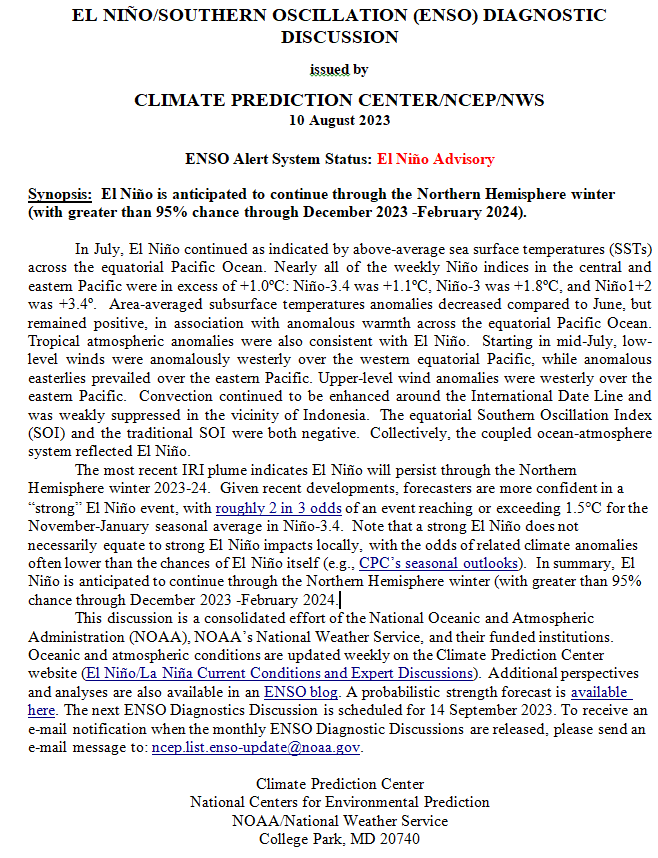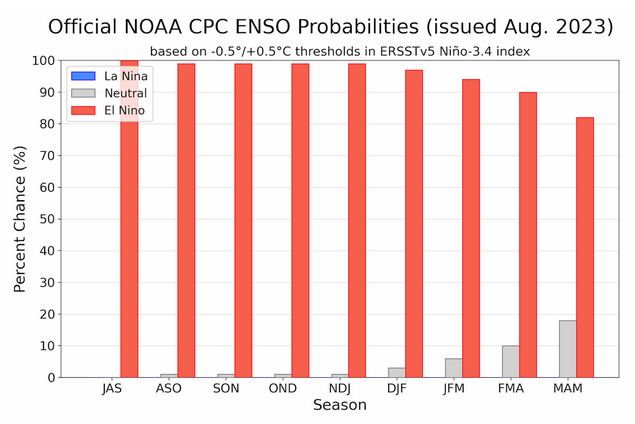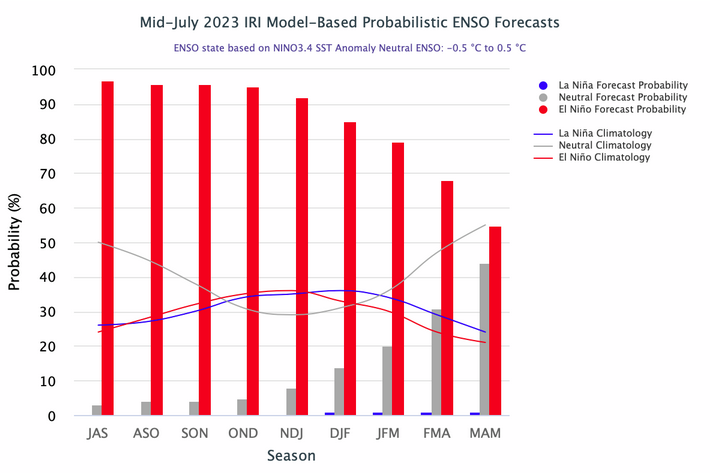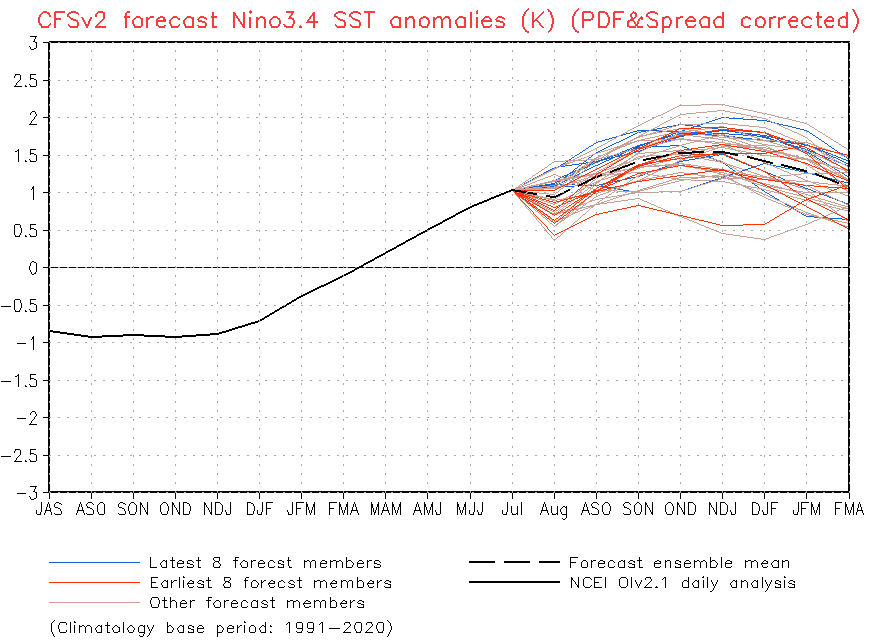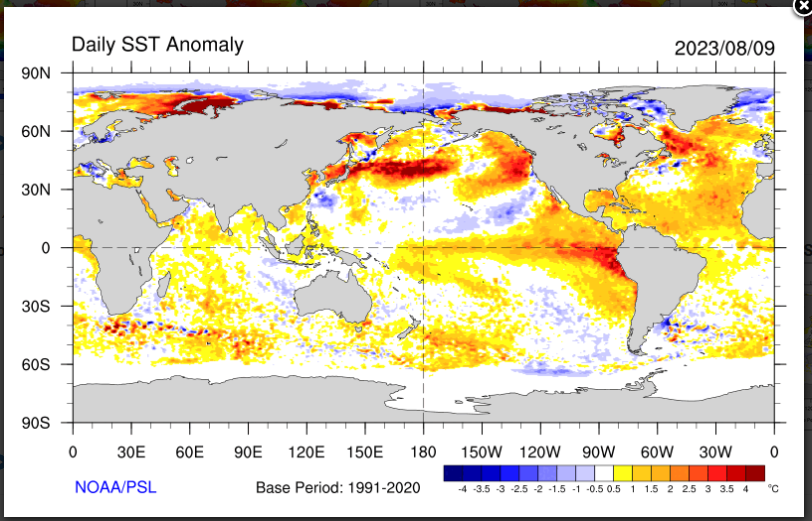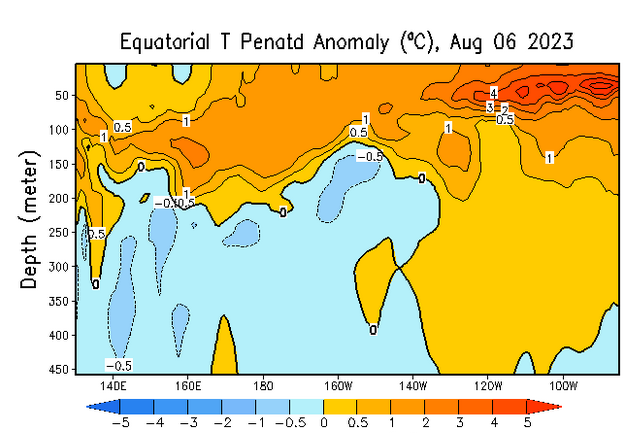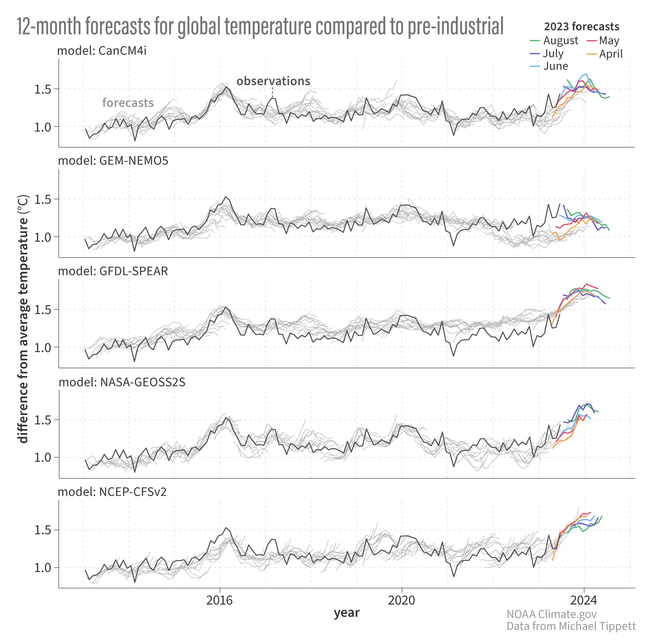On the second Thursday of every month, NOAA (really their Climate Prediction Center CPC) issues its analysis of the status of ENSO. This includes determining the Alert System Status. NOAA again describes their conclusion as “ENSO Alert System Status: El Nino Advisory”
There is not much doubt that we have an El Nino. How long it lasts and its strength remains to be seen.
CLIMATE PREDICTION CENTER ENSO DISCUSSION
| The second paragraph is what is important:
“The most recent IRI plume indicates El Niño will persist through the Northern Hemisphere winter 2023-24. Given recent developments, forecasters are more confident in a “strong” El Niño event, with roughly 2 in 3 odds of an event reaching or exceeding 1.5°C for the November-January seasonal average in Niño-3.4. Note that a strong El Niño does not necessarily equate to strong El Niño impacts locally, with the odds of related climate anomalies often lower than the chances of El Niño itself (e.g., CPC’s seasonal outlooks). In summary, El Niño is anticipated to continue through the Northern Hemisphere winter (with greater than 95% chance through December 2023 -February 2024.” |
We now provide additional detail but I am keeping this article shorter than usual because nothing much has changed since last month.
CPC Probability Distribution
Here are the new forecast probabilities. This information in the past has been released twice a month and the first release is based on a survey of Meteorologists, the second is based on model results. The probabilities are for three-month periods e.g. JAS stands for July/August/September. The first forecast is used to develop the Seasonal Outlook which will be issued next Thursday so that is what I am focusing on.
Here is the current release of the probabilities:
| You can clearly see The forecast does not extend beyond MAM 2024 and one does see a slight tail-off in the probabilities for El Nino conditions in the Eastern Pacific after the winter season. |
And here is the forecast from late last month. The second forecast in the month is based on computer models while the first forecast is based on a survey of meteorologists.
| This showed a faster demise of the El Nino or at least the probabilities tailed off. But it still showed the El Nino likely to continue through the winter. |
What Does the NOAA Proprietary ENSO Model Forecast?
| This model shows the scatter in the forecasts but it also shows the El Nino peaking in the winter. The dark dashed line is the mean of the ensemble forecasts. If you want to see an updated version you can view an updated version by clicking HERE. |
Looking at Actual Current Conditions.
NOAA reports some derived data that describes the current situation and a forecast. But what if we want to form our own opinion? After all, meteorologists are looking at the actual current situation and making predictions.
This shows the current actual situation for the surface of oceans. To update this graphic click HERE.
| You can already see the warm tongue of water extending from Ecuador and Peru. The pattern off the U.S. West Coast is confusing. The warm water off of West Africa might be important re the Hurricane Season. The difference between the Northern Hemisphere and the Southern Hemisphere is interesting. |
Putting the historical information in motion. Updates can be found HERE. but should not be needed.
Now we look at the below surface temperature anomalies. Mapping the details. (Cross-Section along the Equator). The data is a five-day average centered on the date shown.
| There is a lot of warm water on the surface and below it. But the Indo-Pacific Warm Pool is pretty much spent. This raises some questions in my mind. |
Is the response of the atmosphere sufficient to sustain an El Nino?
| The SOI had been falling which is confirming the El Nino but not yet strongly. |
Interesting article from the NOAA ENSO Blog
You can read the full blog post by clicking HERE
Here is an interesting graphic from the blog post.
| I have discussed before that the La Nina phase of ENSO is what warms the oceans and the El Nino Phase may continue the warming of the oceans but it also releases a lot of that heat to the atmosphere. It does that because the IndoPacific Warm Pool expands so there is more warm ocean surface area for evaporation to take place. Above are some model runs predicting the impact of this for 2024. The details are in the legend. Four of the five models predict a large increase. They are just models but something to think about. |
| I hope you found this article interesting and useful. |

